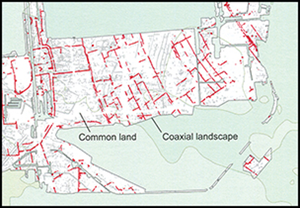Article contents
What haven't we found? Recognising the value of negative evidence in archaeology
Published online by Cambridge University Press: 21 June 2022
Abstract

Large-scale development-led archaeology has changed the very nature of archaeological datasets. In addition to the familiar positive evidence of structures and deposits, there is now a wealth of ‘true-negative’ evidence: the confirmed absence of archaeological remains. Making good use of such data presents a challenge and demands new ways of thinking. Using case studies based on recent developer-led work in the UK, the authors suggest that focusing on ‘fingerprints’ of past human activity at a landscape scale provides a useful approach. The results argue in favour of changes to existing recording systems, as well as the need to integrate more fully both positive and negative evidence in archaeological interpretation.
Keywords
- Type
- Research Article
- Information
- Copyright
- Copyright © The Author(s), 2022. Published by Cambridge University Press on behalf of Antiquity Publications Ltd.
References
- 4
- Cited by


